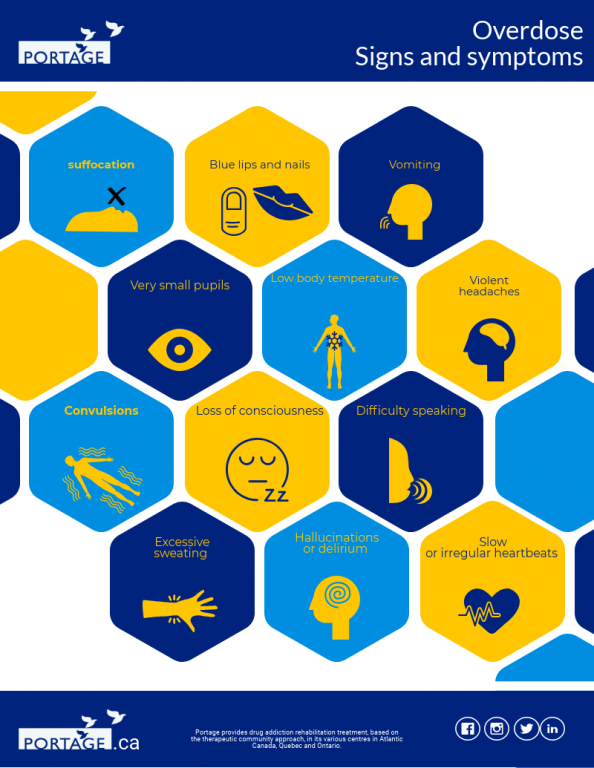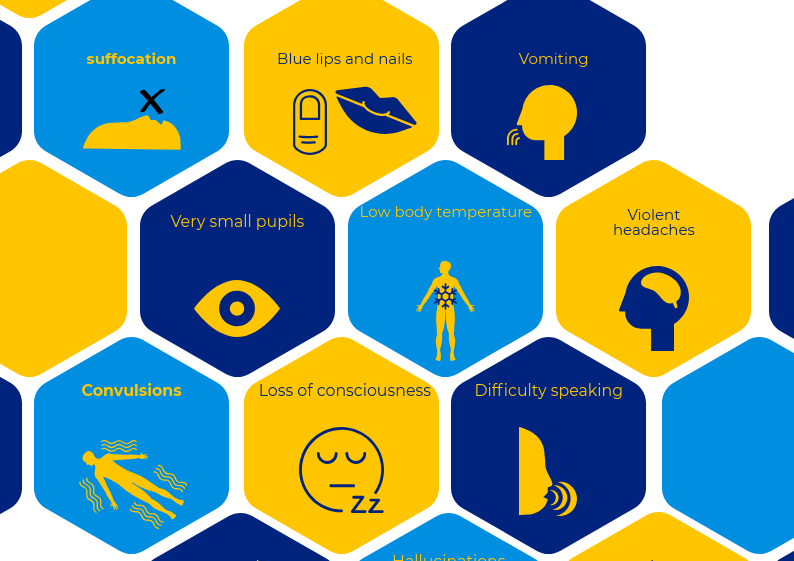Opioid use causes serious problems as a result of their extreme toxicity on the body. Opioids have an effect on the part of the brain that controls breathing, which is why opioid use can result in respiratory distress leading to death. Here are a couple of tips on how to recognize and react to an overdose.
Recognizing an overdose
It’s often difficult to distinguish someone who is experiencing an overdose from drug or alcohol consumption but there are a few signs to help recognize when it happens. An overdose occurs when a person takes drugs beyond the capacity of their body. Many substances may be the cause, such as illicit drugs and over the counter medication like pain killers (analgesics).
The symptoms can vary depending on the substance:
- Violent headaches
- Chest pain or cardiac palpitations
- Difficulty breathing
- Confusion or paranoia
- Convulsions
- Hallucinations or delirium
- Excessive sweating
- Pale skin or being bluish
- A low body temperature
- Difficulty speaking
- Vomiting
- Slow or irregular heartbeats
- A loss of consciousness
What to do in case of an overdose
If an overdose is occurring, the Canadian government recommends to roll the person on their side in a recovery position to ensure they do not choke. Stay close and talk to them to keep them awake and be certain to call 911.[1]
Death following an overdose is avoidable if we know the basics on what to do should one occur. In the case of an opioid overdose, it is necessary to administer naloxone, the opioid antidote, which completely reverses the effects of the overdose if administered in time. Naloxone is available in almost all over-the-counter pharmacies in Canada. It is efficient if administered intravenously, intramuscularly, via subcuticular or intranasal methods. The government has set up a portal to inform people who think they need it. Naloxone is generally distributed to health professionals. However, following the exponential increase of overdoses, naloxone is becoming more and more accessible in pharmacies and centers working with people suffering from addictions (read: Overdose Crisis in Canada).
Recommendations and Prevention
The World Health Organization (WHO) recommends multiple measures to prevent the increase in overdose-related deaths around the world. It recommends that naloxone be made available to those who are susceptible to being around opioid-related overdoses and to train them on how to administer the antidote (read: International Day Against Drug Abuse and Illicit Trafficking)
The Portage Day Center in Montreal is equipped, since the month of July 2018, with naloxone in the form of nasal spray. All the counselors have received training on how to administer naloxone in case they witness an overdose. Moreover, the Day Center’s residents all know where the naloxone is located, which enables them to save a life in case of an emergency.
The WHO recommends using a plethora of therapeutic options to fight opioid dependence such as: psychological support, replacement therapy using methadone, and detox assistance.
The support provided to those suffering from addiction remains the single best option to prevent overdoses. An individual informed on the risks of substance consumption could easily decide to get help or stop completely. Also, the experience and support of others sharing the same reality allows for a collective awareness with respect to the negative sides of drugs. Portage offers, thanks to its 45 year experience in drug addiction rehabilitation and a therapeutic community approach, a way of recovering from addiction and living a healthy and productive life.

[1] https://www.cisss-bsl.gouv.qc.ca/sites/default/files/fichier/surdose_opioides-mesures-de-prevention.pdf






Leave a Reply